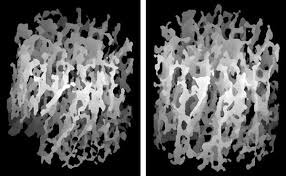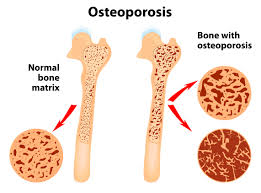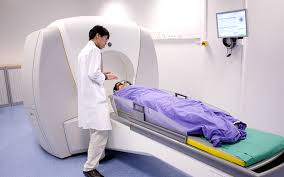Osteoporosis and Diet
Osteoporosis and Diet: Food elements which are not good for the bones
In our previous article we discussed osteoporosis and nutrition and we note some five food elements which are not good for the good health your bones. Salt and certain beverages were cited as foods which are injurious to the bones causing osteoporosis. We want to further the discussion by looking at three other food items which are equally not good for your bones. But before that a good diet is not bad for your health and only a few food elements may not be healthy for you. Therefore as we get into the discussion of osteoporosis and diet, it is important that we appreciate that not all food items are bad. Now having discussed salt and a sorted beverage, let us now get the professional opinion of experts from AWAREmed Health and Wellness Resource Center under the able leadership of Doctor Akoury’s care. Our focus will be on caffeine, some proteins and soy.
Osteoporosis and Diet: The Cost of Caffeine
Caffeine leaks out calcium from the bones thereby weakening their strength and stability of the bones. As we continue taking in caffeine it is estimated that we lose some 6 milligrams of calcium for every 100 milligrams of caffeine ingested. Even though this is not comparable to the units lost when we take salt, it is still significant. Women are more vulnerable when they take caffeine and fail to get adequate calcium periodically to replace the lost ones out of caffeine intake. However this can be corrected by limiting caffeine intake to sat 300 milligrams a day while getting adequate calcium probably offsets any losses caffeine causes.
In all these efforts of trying to prevent osteoporosis using health food elements, it is important to note that coffee which is preferred by many people is actually the major source of caffeine. For example, a 16-ounce cup of coffee can provide 320 milligrams. High-caffeine sodas can contain up to 80 milligrams per can or more. With this concentration of caffeine in some of your favorite drinks, it would be better if you reduce your consumption of such drinks if you were to keep osteoporosis away from your life. If you are ready, then the following tips will be helpful to you in reducing the intake of caffeine:
- Wean yourself from coffee by drinking half regular and half-decaf drinks to start
- Avoid caffeine-laden drinks
- Reach for decaffeinated iced tea or hot tea
- Splurge on a decaf, fat-free latte drink and get 450 milligrams of calcium in the bargain
Remember that coffee which is the main source of caffeine is very addictive and eliminating it may not be very easy. If you are meeting any obstacle in slowing down on your coffee, then you can seek for help at AWAREmed Health and Wellness Resource Center and doctor Akoury will be there to help you get over ant concerns you may be having.
Osteoporosis and Diet: Is Protein Problematic for you?
Protein is food and many people often say that animal protein is problematic for bones this is not true. Just quite the opposite because bones are about 50% protein and remember that bone repair needs a steady stream of dietary amino acids which are also the building blocks of body proteins. Note that enough calcium and vitamin D cast a protective net around bones, but protein comes in a close second. Even though many people across the globe are get plenty of protein, it is regrettable that many elderly women and particularly from America fails to get enough protein on a daily basis and this is not doing them any good to their bones. Professionals suggest that daily protein consumption should be on average 0.8 grams of protein per 202 pounds for men and women over 19 years of age. That translates to some 55 grams of protein a day for a 150-pound woman and about 64 grams a day for a 175-pound man.
Osteoporosis and Diet: There’s Something about Soy
Doctor Akoury acknowledges that while soy products like edamame, tofu, tempeh, and soy beverages may be rich in bone-building protein, they contain plant compounds that may hamper calcium absorption. Oxalates in soy can bind up calcium and make it unavailable to the body. Problems may then arise when you eat a lot of soy but don’t complement (eat) with a lot of calcium.
Even though there are mixed opinions about some research findings about whether soy can cause problems with the stability of the bones or not, the primary objective is to be safe irrespective of what the research findings denote. Therefore, it is important that you avoid any risk as possible. Instead be sure to get a lot of calcium in your diet and in particular calcium originating from dairy foods or supplements.
Soy products fortified with calcium may foster a false sense of security. When compared with calcium content and solubility of calcium-added beverages, the experts established that much of the calcium in soy and other beverages sank to the bottom of the container and could not be redistributed throughout the drink, even after vigorous shaking.
Still, fortified soy products, such as tofu processed with calcium, provide a hefty dose of bone-building nutrients and make a good addition to a balanced diet. If your diet is heavy on soy, be sure to also take in at least 1,000 milligrams of calcium every day.
Osteoporosis and Diet: Best Diet to Beat Osteoporosis
Finally diet is generally good for your health in all dimensions. There can be no perfect health with improper diet and therefore when it comes to osteoporosis diet is still good with exemption of the foods we have highlighted above. It is for this reason that such foods should be avoided for the benefit of healthy bones. Doctor Akoury concludes that eating safe is the way to go. And the safest approach is eating a diet that’s low in salt and rich in fresh and minimally processed whole grains, fruits, and vegetables. And don’t forget to include sufficient calcium and vitamin D from foods, and supplements where is necessary. In all this ensure that caffeine and carbonated drinks are limited or omitted completely from your list of choice food.
Osteoporosis and Diet: Food elements which are not good for the bones





